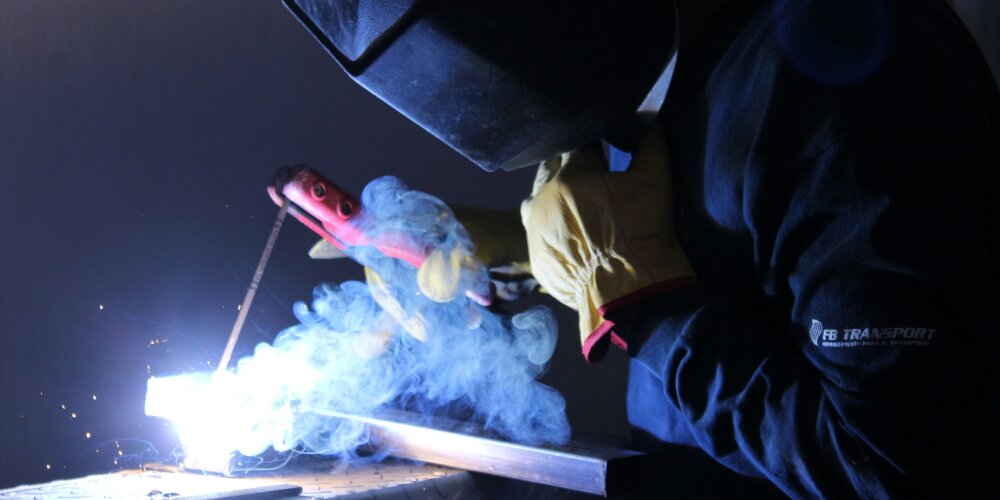The Connection Conundrum: Reducing Costs in Structural Fabrication

At the 2024 NASCC: The Steel Conference, Christian Crosby highlighted a critical yet often overlooked aspect of structural fabrication: the cost of connections.
Senior vice president of fabrication at Schuff Steel, Christian Crosby, hosted a talk entitled ‘Connection Economy - Thoughts From a Steel Fabricator’ which focused on cost reduction in structural fabrication.
Crosby explained that while connections are only one of many cost drivers in the fab shop, they represent a considerable portion of overall fabrication costs. Material costs also play a significant role, including whether the fab shop can purchase directly from the mill or through a service centre.
The complexity of the structure and the number of beam sizes used also affect the cost. Trusses and built-up shapes, for instance, have an impact. Using stock beam sizes from the mill is typically more cost-effective than having a fabricator assemble and weld custom beam sizes.
Connection design significantly influences overall fabrication costs. Much of this comes from the quest to standardise and simplify at the engineering and detailing stages, which often pushes complexity to the shop floor and jobsite, where it becomes more expensive.
Crosby gave the example of specifying uniformly distributed loads (UDLs) instead of the actual loads placed on a beam, which can lead to over-fabrication and increased costs.
The AISC code of standard practice offers three options for who should design connections: the owner's designated representative for design (ODRD), usually the structural engineer of record; an ODRD-approved detailer; or a licensed engineer working for the fabricator.
Crosby advocated for the third option, an engineer working for the structural fabricator. This allows for designing connections that meet actual loads and align with the fab shop’s strengths and weaknesses.
The fabricator’s engineers certainly can work with certain critical connections designed by the ODRD. “But as for the rest of them, allow the fabricator to design the connections. Moreover, the design team needs to be open to value engineering. Fabricators have a lot of good ideas on how to save money on a structure,” Crosby added.
Decisions, however, must be coordinated through the ODRD to ensure that all designs meet broadly accepted standards. Fabricators have valuable insights into their processes and equipment, which can create substantial value.
In an AISC-certified shop, the quality management system must be audited annually, with implemented procedures for both welding and bolting.
“This doesn’t necessarily mean the fabricator is efficient in both welding and bolting. It just means the shop has the processes and people to do them both,” Crosby added.
Ultimately, the choice between bolting and welding depends on communication within the construction supply chain. Engineers should understand the strengths of local fab shops and consider allowing fabricators to design most connections.
An old rule of thumb states that material, fabrication, and erection each comprise roughly a third of the total cost of steel construction. Increasing fabrication costs might lower erection costs to the point where overall costs are reduced. More shop welding and bolting means more tasks are completed under one roof, in a controllable environment.
Structural fabrication decisions should not be made in isolation. Crosby cited that welded field connections can cost upwards of 40% more than those welded in the shop. Field welding, on average, is 35% less efficient than shop welding.
The cost difference between shop and field welding might not be as pronounced in certain rural areas, while automated welding at a specific structural fabricator might widen that cost difference. The complexity of the structure might also require manual welding, adding to the variables.
Crosby reiterated his opening message to engineers in the construction supply chain: Design with standard, widely available materials and beam sizes in mind; consider actual loads; and recognise that many variables influence connection design.
“It’s impossible to know everything,” Crosby said. “But don’t worry about it. Let the fabricator design their own connections”.
Weld inspection services at The Lab
State-of-the-art weld inspection services are offered by The Lab at Brookes Bell.
Our comprehensive weld testing services include proactive and reactive weld inspection using visual testing, magnetic particle testing, liquid penetrant testing and much more.
To learn more about our weld inspection services, please contact us today.
Learn about weld inspection services from The Lab
For more information, industry insights, and the latest news, explore The Lab’s News and Knowledge Hub…
New Ammonia Conversion Marks Leap Forward for Green Hydrogen Energy | Princeton University Engineers Tough Concrete Inspired by Human Bone | Reusable 3D-Printed Glass Bricks Could Cut Construction Emissions
- Date
- 27/05/2025
